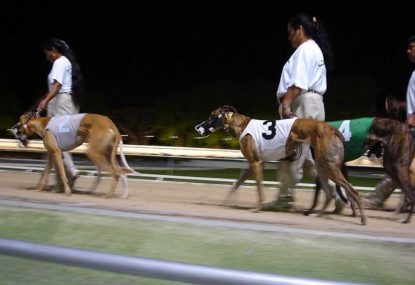TWO GOOD! Zahra wins back-to-back Melbourne Cups on Without a Fight as three horses pull up lame
Without a Fight completed the rare Caulfield Cup-Melbourne Cup double on Tuesday as star jockey Mark Zahra went back-to-back in the big one after…

The Queensland Government has reacted to the live baiting scandal by removing the Board that controls all three codes, to mixed responses.
It did this after receiving recommendations from the MacSporran report that examined the greyhound industry in Queensland.
While there are plenty of worthwhile recommendations that, if implemented will have meaningful outcomes for all three codes of racing, the Inquiry missed an opportunity to properly reform racing in Queensland.
Of the recommendations, the need to split the commercial functions of racing from integrity and animal welfare has been obvious for some time. Dismissing the Board was not surprising and while the members of the Board could hardly be personally responsible for the animal cruelty that was shown, the system of policing that was put in place was inadequate.
Unfortunately, the aim of the inquiry, to restore public confidence in greyhound racing, was too narrow. When one delves into the basic financial structure of racing in Queensland, we find a situation all too familiar to those of us that reside in NSW.
Without addressing this, the lofty ideals that the Queensland Government is currently espousing are unlikely to be achieved.
What is the financial structure of racing and why is it important?
The best way to start thinking about how the financial structure of racing works in Australia is to go to your local pub that has a TAB. Sit down and have a drink. Then simply observe how many races are run while you’re there.
The sheer volume of racing, seemingly only breaking down on Good Friday and Christmas Day, has to be benefiting someone, but who?
Obviously Sky and the TAB take their cut, so too the corporates. Government also takes their cut, and then it is distributed to the codes in different ways, depending on what state you’re in, and is spent on prizemoney, promoting and running the codes, and integrity. A lot of the squabbles in racing are about how this money is distributed.
These squabbles at Racing Queensland were highlighted in the MacSporran report, one of which involved whether to spend more money on prizemoney, or direct it to employing more people to inspect properties and private trial tracks. Racing Queensland chose the former; probably not the best idea in hindsight.
The truth about animal welfare is this: improved outcomes are strongly correlated with how much you spend on it. Greyhounds need food, water, care and shelter. Someone has to knock on doors and inspect properties to prevent live baiting. The UK didn’t develop the greatest single-breed charity out of goodwill alone. It put in money, and it works.
So how much do the codes earn, and how much do they get?
On page 165 of the report there is a table taken from the Australian Racing Fact Book with the wagering turnover by year and state (although 2011 is a typo and you need to go back to the original source – hooray for referencing!).
In Queensland, the share of wagering turnover by code is 12.6% on greyhounds, 8.8% on harness, and 78.6% on thoroughbreds, averaged over the five years. According to Racing Queensland’s annual reports, the prizemoney share is 9%, 14% and 77% respectively.
In annual financial terms, the wagering turnover in Queensland was $315 million, $219 million and $1.97 billion annually for greys, harness and thoroughbreds over five years from the MacSporran review (p166). The prizemoney share is $9.3 million, $14.5 million and $79 million annually over five years taken from the Racing Queensland annual report (p28).
In NSW, the intercode agreement similarly results in a terrible financial result for greyhounds.
In annual financial terms, for NSW and Queensland combined, the average annual wagering turnover is $1.39 billion, $829 million and $5.67 billion annually for greys, harness and thoroughbreds over five years from the MacSporran review. The prizemoney returns are $31.6 million, $42.4 million and $212 million annually taken from the Racing Queensland annual report, GRNSW annual report (p27) Harness racing NSW (p28) and the Australian Racing Fact Books.
In simple terms, NSW and Queensland greyhounds are bringing in 20% and 12.6% respectively of the dough, and getting 12.2% and 9% of the pie, respectively.
If the prizemoney were given according to the money coming in, greyhound racing in NSW and Queensland could be over $18 million a year better off.
The MacSporran report estimates that $4 million is taken by the Queensland Govrrnment and the parliamentary inquiry estimated $30 million by NSW.
In NSW, only $23.2 million a year is paid out in prizemoney, meaning that NSW residents profit more from greyhounds than the breeders, owners and trainers. (Source: GRNSW report)
So far as NSW and Queensland are concerned, the increased compliance measures, the salaries for inspectors, the money for adoption programs, it’s all there. When prominent people in NSW and Queensland thoroughbred racing complain about their boards being sacked, I say stop complaining.
The greyhounds have been used as a cash cow by both the Government and other codes for years, and we’re now seeing the consequences of this short-sighted policy.
The MacSporran report failed to address the continuing problem that we are still spending money earned by greyhounds on horses and ourselves, rather than on the greyhounds themselves.